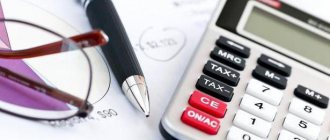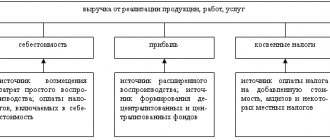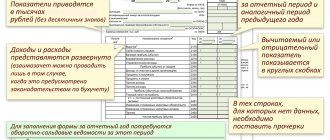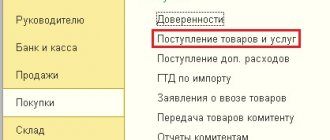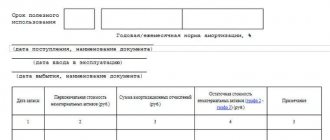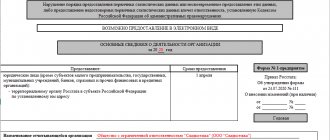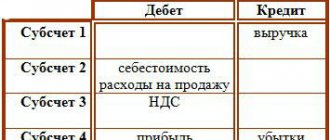Accrual method
Using the accrual method, include revenue in the tax base at the time the goods are sold. It does not matter when payment was received from buyers. Such rules are established by paragraph 3 of Article 271 of the Tax Code of the Russian Federation.
Situation: at what point should an organization calculating income tax using the accrual method include sales revenue as income? Under a supply agreement, ownership of the shipped goods passes to the buyer at the time of payment.
Include proceeds from sales as income at the time the buyer pays for the goods.
When calculating income tax, revenue arises in the period in which the goods (work, services) were sold (clause 3 of Article 271 of the Tax Code of the Russian Federation). Sales means the transfer of ownership of shipped goods (Clause 1, Article 39 of the Tax Code of the Russian Federation).
As a general rule, the acquirer's right of ownership of a thing arises from the moment of its transfer. But the parties to the contract may provide for a different procedure. For example, until payment for shipped goods, the seller may remain their owner. This follows from paragraph 1 of Article 223 of the Civil Code of the Russian Federation. Thus, if, under the terms of the contract, ownership of the goods passes to the buyer after payment, the proceeds must be included in income when calculating income tax on the date of payment.
Similar clarifications are contained in letters of the Ministry of Finance of Russia dated November 9, 2010 No. 03-03-06/700 and dated July 20, 2006 No. 03-03-04/1/598. In arbitration practice there are examples of court decisions that confirm the legality of this approach (see, for example, the resolution of the Federal Antimonopoly Service of the Ural District dated December 12, 2007 No. F09-9778/07-SZ).
Note: In order for the seller to recognize sales revenue on the payment date, the seller must be able to control the buyer's use of the goods.
If the contract states that ownership of the goods passes to the buyer at the time of payment, then until that moment he has no right to dispose of the goods received (Article 491 of the Civil Code of the Russian Federation). But for the seller to recognize sales revenue on the payment date, it must be able to control the buyer's use of the goods. If the seller does not have such an opportunity, the moment of transfer of ownership does not matter for the recognition of income from the sale. Lack of control over the shipped goods means that, in fact, ownership has passed to the buyer. In such a situation, the seller must recognize sales revenue on a general basis - at the time of shipment. This conclusion is confirmed by the letter of the Ministry of Finance of Russia dated September 20, 2006 No. 03-03-04/1/667 and paragraph 7 of the information letter of the Presidium of the Supreme Arbitration Court of the Russian Federation dated December 22, 2005 No. 98.
What is sales income
Reflection of income from sales in accounting and tax accounting is carried out according to similar principles.
From the point of view of Chapter 25 of the Tax Code, sales income is recognized as proceeds from the sale of goods, works, and services, both self-produced and previously purchased. Revenue from the sale of property rights is taken into account in a similar way (Article 249 of the Tax Code).
In turn, proceeds from the sale of goods, works or services are receipts in payment for these goods, works or services, and these calculations can be expressed both in cash and in kind. The latter is relevant for cases when a company closes a transaction with a barter transaction, that is, in payment, for example, for the sale of its own goods, it accepts the provision of reciprocal services from the same counterparty. In this situation, despite the absence of actual monetary payment for goods, their value, “covered” by the buyer’s services, will be recognized as income from their sale.
The date of receipt of income from sales from the point of view of income tax can be determined in two ways: by the accrual method and by the cash method. In the first case, the dominant role is given to the moment of transfer of goods to the client, the execution of work or the fact of provision of services. There may still be no payment from the buyer, but the company is already required to take into account income from sales for the purposes of calculating income tax. With the cash method, income is determined, just the opposite, by the date of receipt of funds from the counterparty.
When applying the simplified tax system, income from sales is included in the tax base also on a cash basis, that is, on the date of receipt of actual payment from the client (Article 346.17 of the Tax Code).
Cash method
If the organization uses the cash method, then all of the listed expenses will reduce the proceeds from sales, subject to their payment (clause 3 of Article 273 of the Tax Code of the Russian Federation).
Situation: at what point can the purchase price of goods sold be included in expenses when calculating income tax? The selling organization determines income and expenses using the cash method.
With the cash method, the purchase price of goods sold can be expensed only after payment has been received from customers.
The validity of this conclusion is due to the following.
The seller has the right to reduce income from the sale of goods by the cost of their acquisition (subclause 3, clause 1, article 268 of the Tax Code of the Russian Federation). From the literal interpretation of this rule, it follows that the moment of recognition of income from sales must precede (or coincide in time) the moment of writing off expenses in the form of the purchase price of goods sold.
The date of receipt of income for organizations that calculate income tax using the cash method is the day the payment is received (clause 2 of Article 273 of the Tax Code of the Russian Federation). Article 268 of the Tax Code of the Russian Federation does not provide for any specific features of recognizing income and expenses when selling goods for organizations using the cash method.
Thus, with the cash method, the purchase price of goods can be written off as expenses if two conditions are simultaneously met:
- the goods have been paid to the supplier (clause 3 of Article 273 of the Tax Code of the Russian Federation);
- the goods were sold to the buyer (clause 1 of article 268 of the Tax Code of the Russian Federation).
The cost of sold purchased goods must be assessed in one of three possible ways: FIFO, at the average cost or at the cost of a unit of goods (subclause 3, clause 1, article 268 of the Tax Code of the Russian Federation).
Advice : with the cash method, the best option for valuing purchased goods is at the cost of a unit of goods. If you organize detailed analytical accounting, you can easily determine when certain goods were purchased, paid for and sold.
It is difficult to use other methods of valuing purchased goods using the cash method. Often, batches of goods are paid to suppliers and sold to customers in parts, in different reporting and even tax periods. Moreover, both paid and unpaid goods can be shipped to customers. In such situations, it is very difficult to monitor compliance with all the conditions necessary to include the cost of goods sold as an expense.
Question 6. Revenue from the sale of purchased goods.
Chapter 25 of the Tax Code of the Russian Federation establishes a special procedure for determining the tax base for organizations engaged in wholesale, small wholesale and retail trade.
In this regard, it is necessary to keep separate records of revenue from the sale of purchased goods. Accounting and tax accounting of proceeds from the sale of purchased goods are the same. Therefore, to fill out Appendix No. 1 to sheet 02 of the Declaration, credit turnover data from account 90 “Sales” subaccount “Revenue from the sale of purchased goods” can be used. To confirm the data reflected on line 012 of Appendix No. 1 to Sheet 02, a register of the same form as the analytical register of revenue from the sale of goods (works, services) of own production can be used.
In accounting, revenue from the sale of purchased goods is reflected as follows:
| № | Operation | Documentation | Debit | Credit | Sum |
| Goods shipped to buyer | Invoice, invoice | 62-1 | 90-1 | 717 440 | |
| The purchase price of shipped goods has been written off | Accounting calculation | 90-2 | 534 000 | ||
| Sales expenses written off | Accounting calculation | 90-2 | 57 000 | ||
| VAT charged | Invoice, sales book | 90-3 | 109 440 = 717 440 * 18/118 | ||
| Profit from sales of products is reflected | Accounting calculation | 90-9 | 17,000 = 1 – VAT – 2 – 3 |
Line 012 of Appendix No. 1 to sheet 02 of the Declaration shows 608,000 rubles. (717 440 – 109 440).
The register is similar to revenue from the sale of domestically produced goods and materials.
Question 7.
Proceeds from the sale of property rights.
Clause 5 of PBU 9/99 in organizations whose subject of activity is the provision of rights arising from components to inventions, industrial designs and other types of intellectual property, proceeds from this activity are considered revenue.
In accounting, revenue from this type of activity is reflected in account 90 “Sales” subaccount “Revenue from the granting of rights to use intellectual property objects.”
When the granting of rights to use intellectual property objects is not the subject of activity, the proceeds are classified as other income and are reflected in accounting in account 91 “Other income and expenses” in a separate subaccount “Other income from the granting of rights to intellectual property objects.”
In tax accounting, proceeds from the sale of property rights are reflected as income from sales. Analytical tax accounting registers are the same as when accounting for income from sales of own products. The final data is reflected in line 013 of Appendix No. 1 to sheet 02 of the Declaration.
Direct and indirect costs
Direct costs include:
- the cost of purchasing the goods being sold;
- transportation costs for delivery of purchased goods to the warehouse of a trading organization (provided that these costs are not included in the purchase price).
Direct expenses can be taken into account in the tax base only as the goods to which they relate are sold. In this case, the cost of purchasing the goods being sold is resolved in one of three possible ways: FIFO, at average cost or at unit cost. Based on this, the cost of goods shipped but not sold at the end of the month cannot be included in income tax expenses.
All other expenses of a trade organization are considered indirect (except for non-operating expenses, the list of which is defined in Article 265 of the Tax Code of the Russian Federation). For example, employee salaries (including insurance premiums), amounts of accrued depreciation, packaging costs, pre-sale preparation of goods, etc. Such expenses reduce taxable profit regardless of the volume of goods sold. They should be written off in the month in which they arose, according to the rules of Article 272 of the Tax Code of the Russian Federation.
This follows from the provisions of Article 320 of the Tax Code of the Russian Federation. Similar clarifications are contained in the letter of the Ministry of Finance of Russia dated September 4, 2012 No. 03-03-06/1/465.
Volume of funds from the sale of goods
A fairly important value on which the size of the financial profit of a legal entity as the final financial result of work directly depends is the amount of revenue from the sale of goods of this legal entity. The amount of revenue that a legal entity receives from the sale of products as well as profit directly depends on the quantity of products produced or sold, as well as on the applied price level.
Important: Revenue from the sale of products at the corresponding cost can be determined using various methods.
The proceeds from the sale of products at the appropriate value are determined depending on the presence or absence of contracts, market business conditions, as well as ways of introducing commercial products to the market, etc.
The traditional method for determining revenue from the sale of products is the method in which the sale of products is considered completed when the funds for it are received in the organization’s bank account or in cash at the cash desk.
However, revenue from the sale of products can also be calculated after presentation of payment documents to the buyer or after shipment of the purchased goods to the buyer. The method for determining revenue from the sale of products directly depends on the contractual terms, as well as the forms of sales of the products sold and other economic conditions that each organization has the right to establish independently for a long period of time.
